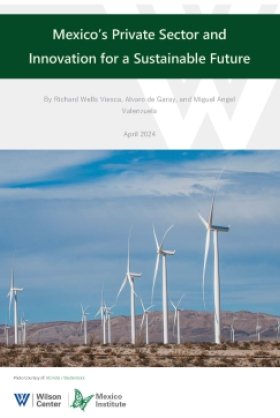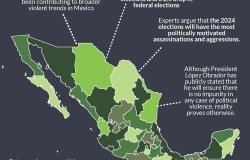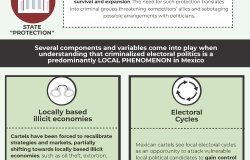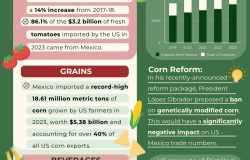Mexico Institute in the News: Kings of War - Mexican Cartels: Crime or Terrorism?
Whereas high homicide rates are common side-effects of drug conflicts throughout Latin America, Mexico has caught the world’s attention due to the brutality that has come to dominate cartel tactics. Despite the widespread assumption that organized crime belongs to a completely different category of threat, it has become clear that brutal violence in Mexico has many similarities to terrorism tactics. In this analysis of Mexican cartels, Antonio Sampaio cites Eric Olson’s report entitled “Considering New Strategies for Confronting Organized Crime in Mexico.”
The IISS, 7/02/2012
Tomorrow Mexicans go to the polls to vote for a new president in the middle of an increasingly brutal drug war. The hard-power approach applied by President Felipe Calderón during the past five and a half years has produced improvements, with homicide numbers declining in the first three months of 2012. That has been overshadowed, however, by an increase in the level of brutality through which cartels and smaller breakaway criminal groups pursue their turf wars. Despite the widespread assumption that organised crime belongs to a completely different category of threat, it has become clear that brutal violence in Mexico has many similarities to terrorism tactics. They serve as messages, through which small and large groups negotiate their positions in an overcrowded criminal space. Brutal violence is used to communicate warnings, threats and territorial claims.
Whereas high homicide rates are common side-effects of drug conflicts throughout Latin America, Mexico has caught the world’s attention due to the brutality that has come to dominate cartel tactics. The finding of 49 decapitated and dismembered bodies on a highway near Monterrey last month, connected to the rivalry between two of the most powerful cartels – Los Zetas and Sinaloa – reinforced the sense that disputes between criminal groups over territories and power drive a particularly grim style of violence.
Such bloody methods have become particularly frequent during the past few months. During May and June, 122 bodies, either decapitated or dismembered, were found in different areas of the country, a particularly gruesome period even for Mexican standards. At the same time that brutality appears to be on the rise, the country recently registered the first quarterly drop in homicides since 2007: a 6.2% fall between January and March 2012 in comparison with the same months of 2011. These trends indicate that, five and a half years after the launch of the ‘war on drugs’ by current
President Felipe Calderon, brutal violence is on the rise even as overall homicide numbers are falling.
Related Program

Mexico Institute
The Mexico Institute seeks to improve understanding, communication, and cooperation between Mexico and the United States by promoting original research, encouraging public discussion, and proposing policy options for enhancing the bilateral relationship. A binational Advisory Board, chaired by Luis Téllez and Earl Anthony Wayne, oversees the work of the Mexico Institute. Read more







